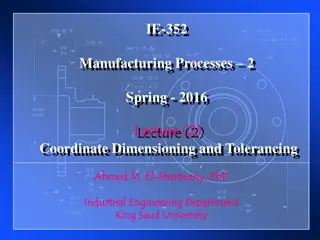
Innovative Concepts and Specifications for MaRIE X-ray Camera
Discover innovative ideas and technical specifications for the proposed MaRIE X-ray camera, including details on single-photon counting modes, physics of 50KeV photon detection in Si, ideal volume elements, and potential applications for low-energy X-rays. Explore the possibilities and advancements in X-ray imaging technology as discussed in this detailed information.
Download Presentation

Please find below an Image/Link to download the presentation.
The content on the website is provided AS IS for your information and personal use only. It may not be sold, licensed, or shared on other websites without obtaining consent from the author. If you encounter any issues during the download, it is possible that the publisher has removed the file from their server.
You are allowed to download the files provided on this website for personal or commercial use, subject to the condition that they are used lawfully. All files are the property of their respective owners.
The content on the website is provided AS IS for your information and personal use only. It may not be sold, licensed, or shared on other websites without obtaining consent from the author.
E N D
Presentation Transcript
Basic Ideas and Specs for the proposed MaRIE Xray Camera
Detection at the MaRIE XFEL Basic reference: On the Single-Photon-Counting (SPC) modes of imaging using an XFEL source, Zhehui Wang, JINST 10 C12013, 2015 (from a workshop on radiation imaging detectors at DESY) Measurement goal: 7D phase space!
Single Photon Counting Mode Reference from above promotes single photon counting mode. My speculation for motivation: this eliminates need for ADC conversion, which can significantly speed up camera rep ( frame rate. Shooting for 500 MHz, upgrade to 3 GHz. Best to date is about 10 MHz for continuous readout. This places constraints on volume of camera element
Physics of 50 KeV photon detection in Si Absorption length is ~1cm Photoelectric effect (~50%): about 3.5 eV per e/h pair ~15000 electrons Compton scattering (~50%; much higher for harmonics of MaRIE energy): degraded photon escapes. Compton edge is only about 7 keV. Mean charge for Compton scattering is < 1000 e- Gain can be important for single-photon scattering
Ideal Volume Element Transverse pixel size set by required resolution Longitudinal size then set by depth leading to ~1 photon per 3D element Leads to thin sensors: 30 um for Si Stack many layers to get efficiency Sounds like AC LGADs might be a good solution!
Another Possible Application: Low-Energy Xrays Was approached by Dominic Greiffenberg (PSI, Zurich) about possible use of LGADs for ~250 eV Xrays. Connected me with Anna Bergamaschi and Andra Marie, who are associated with detector development Claim to have contact with RD50 and Hartmut Independently, we ve been warned that such Xrays will be absorbed in the first um or so, and if one is not careful, the fields in that region can be squirrely.
Specs for Low-Energy Application (from Anna) Summarizing the main requirements: - Energy range >250 eV (ideally <50nm entrance window). - Pixels with 75um pitch (25 um final goal), strips 50 um pitch. 150um for pixels and 100um for strips would still be acceptable. - Considering a that our readout electronics has about 100 e- ENC, we would like to have single photon resolution (10 sigma) to energies as low as possible, at least below 1 keV. - Timing not important for position sensitive detectors, but there are applications at 250 eV where better than 200 ps would be desirable. We are working with FBK to optimize sensors for soft X-ray detection, but we are open to further tests. Best regards, Anna






















